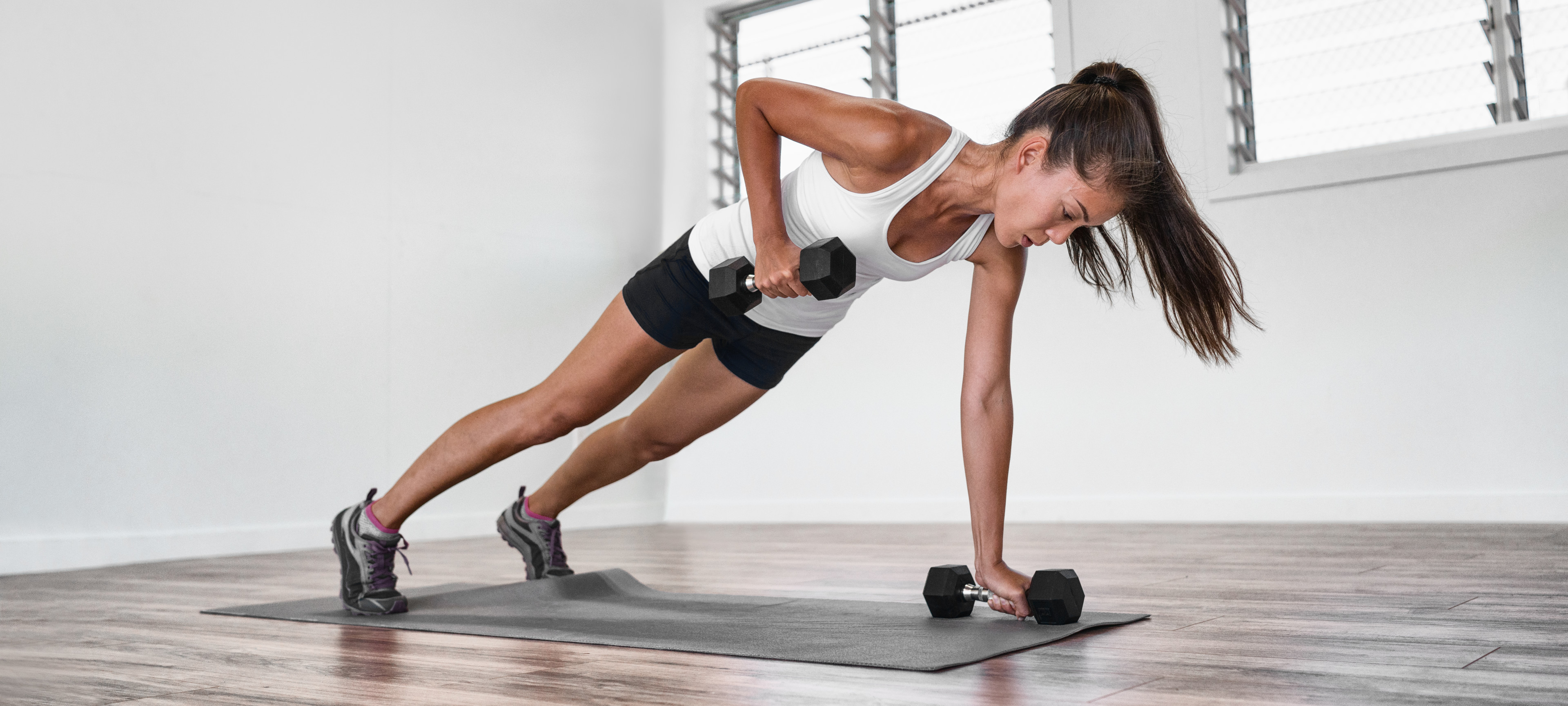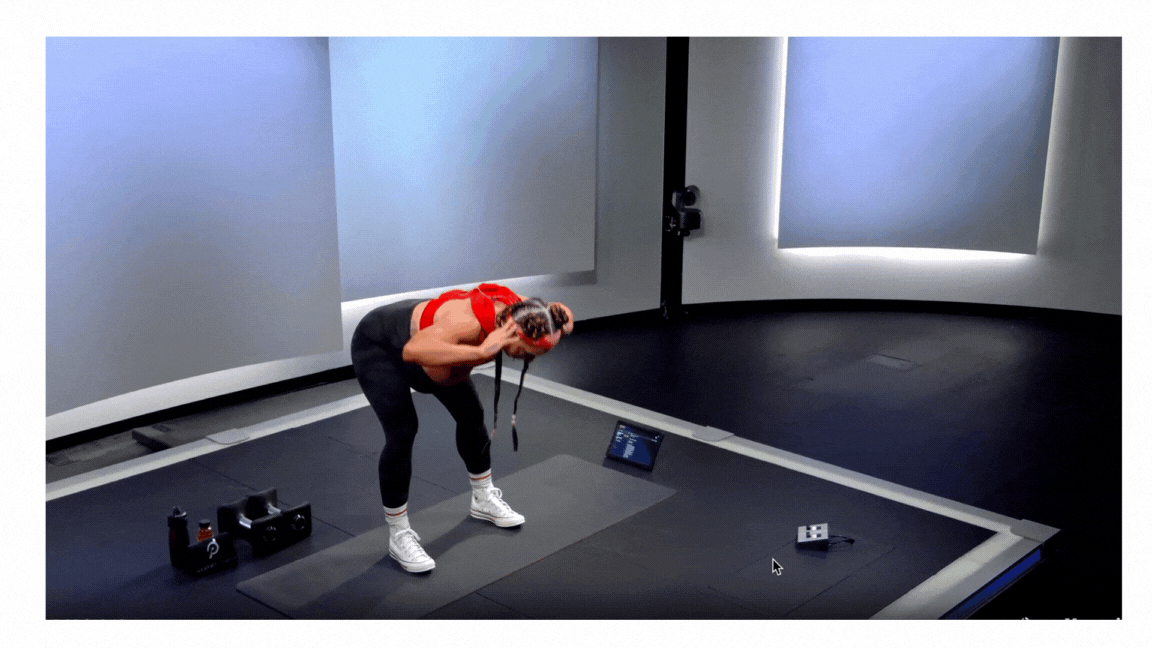
Maridav/iStock/Getty Images Plus via Getty Images
The 10 Best Moves for Building a Strong Back
Don’t neglect these crucial pulling and lifting muscles.
By Sarah Klein•
Why Train Your Back Muscles?
Muscles Worked By Back Exercises
The 10 Best Back Exercises
How to Add Back Exercises and Workouts Into Your Fitness Routine
That old saying “out of sight, out of mind” shouldn’t apply to your workouts: It’s important to train the muscles on the back of your body—called your posterior chain—even though you can’t see them as easily when you’re flexing in the mirror.
“Our entire daily routine is front-dominant,” says Peloton instructor Erik Jager. “We sit at the computer, write something on our smart phone, or sit on our favorite Peloton Bike. In doing so, our muscles at the front of our body work for the most part without us needing our back muscles to perform these movements.”
These front-dominant daily movements internally rotate our shoulders. Overtime, this slouched posture can contribute to back pain and stiffness. The antidote? Incorporating more back exercises into your workout routine. You’ll improve your posture, ease (or prevent) pain, and build more balanced, functional strength.
Why Train Your Back Muscles?
Your back muscles are among the more frequently “forgotten” muscles in typical workout routines, Erik says. But they’re responsible for lifting and pulling motions, and crucial to train for several reasons, he says.
Improve your posture: Stronger back muscles help you stand tall. And better posture in turn improves your range of motion, flexibility, and balance, lowering your risk of falls, according to the National Library of Medicine. Better posture also gives you “a more self-confident appearance,” Erik says.
Limit wear and tear: “Well-trained muscles…help to keep the joints in their neutral positions, thus reducing wear and tear, injuries, and tension,” Erik says. In their neutral positions, joints can also more easily move through their full range of motion, supporting good mobility.
Treat and prevent back pain: Low back pain is the leading cause of disability around the world, according to the World Health Organization. Strengthening the muscles of the back is one of the go-to treatment techniques, but it also helps prevent back pain in the first place, according to an August 2017 report in the ACSM's Health & Fitness Journal.
Burn more calories: People who have more lean muscle mass burn more calories, even at rest. So whenever you “forget” about muscles on the back of your body (or anywhere else, for that matter), you’re missing out. “When these muscles are activated and working well, our basal metabolic rate and therefore our calorie requirement also increases,” Erik says.
Muscles Worked By Back Exercises
Technically part of your core, your back is built of layers of muscle that work together. Some of the key movers targeted by the best back exercises are:
Latissimus dorsi: These flat, broad muscles on your mid-back are responsible for many movements of your arms, like rotating them and moving them in toward your body. Your lats also help with breathing. “This muscle is the main muscle for movements such as pull-ups or rowing, but also in everyday life in all movements where you pull something toward you,” Erik says.
Trapezius: Extending from your mid-back to your shoulder, your traps help move your shoulders and stretch and rotate your head and neck. “The trapezius muscle is essential for raising the arm above horizontal and stabilizing the shoulder when carrying heavy loads,” Erik says. “It is…very decisive for the position of the head and shoulder blades and thus enormously crucial for posture.”
Rhomboid: The major and minor rhomboid muscles lie between your shoulder blades and spine on your upper back and are crucial to lifting your shoulder and arms, Erik says.
Erector spinae: These long muscles on the sides of your spine extend and bend your torso and neck.
The 10 Best Back Exercises
There isn’t necessarily a number-one back exercise that everyone should do. Instead, you’ll want to experiment with a variety of movements to find the exercises that work your back the most and that mesh well with your abilities and preferences.
You’ve got plenty to choose from and minimal barriers to entry: Some of the most effective exercises for your back don’t require any equipment. Erik’s favorite bodyweight back exercises below open up your chest and shoulders to combat all that slouching and also challenge your core stability to further minimize back pain.

1. Good Morning
Start standing with your feet hip-distance apart and your hands behind your head.
Hinge at the hips and bend your upper body until it’s about parallel with the ground. Keep your knees over your ankles.
Contract your glutes to stand back up to the starting position.
Repeat for 15 to 20 reps.
2. Prone Lat Pulldown With Towel
Lie down on your stomach holding a towel between your hands with your arms extended overhead.
Contract your abs and tilt your hips up slightly so your back is flat as you lift your chest off the floor.
Squeeze your shoulder blades together as you pull the towel down toward your chest.
Extend your arms overhead again.
Repeat for 15 to 20 reps.
You can also do this exercise with a shirt or leggings if you don’t have a towel handy. A resistance band works, too!
3. Airplane With Overhead Arm Raise
Start standing with your feet hip-distance apart and your arms by your sides.
Balance on your left leg as you hinge at the hips. Simultaneously extend your right leg out behind you and lower your torso until it’s parallel to the floor.
Sweep your arms out in front of you, keeping your shoulders away from your ears. Pause here for a moment.
Lower your arms toward the floor, then engage your glutes to return to standing.
Repeat for 8 to 10 reps per side.

4. Superhuman With External Rotation
Start lying down on your stomach with your arms by your sides, palms facing up.
Lift your upper body as you simultaneously rotate your thumbs outward.
Lower your upper body to the floor as you rotate your thumbs inward again.
Repeat for 15 to 20 reps.
5. Elbow Push From the Floor
Lie on your back with your knees bent and your feet flat on the floor about a foot away from your glutes.
Bend your arms so your elbows rest on the floor.
Engage your core to lift your shoulder blades a few inches off the ground.
Push through your elbows to lift your upper body even farther off the floor.
Lower back down from your elbows slowly, without letting your shoulder blades touch the ground.
Repeat for 6 to 10 reps.
6. Plank Row
Start in a high plank position with your palms planted under your shoulders.
Without allowing much movement in your hips, bend your left elbow and pull your left hand toward your left hip.
Lower your left hand to the floor.
Repeat for 5 to 10 reps, then switch to the other side.
You can also do this exercise with a dumbbell in each hand.

7. Reverse Fly
Start standing with your feet hip-distance apart and hinge at the hips so your torso is at a 45-degree angle to the floor.
Bring your arms toward each other in front of your body with your palms facing in.
Pull your shoulder blades together to lift your arms parallel to the floor in a T position.
Slowly lower your arms back in front of you.
Repeat for 15 to 20 reps.
You can also do this exercise with a dumbbell in each hand or use household objects like canned food or water bottles. And instead of always making a T formation with your arms, you can also experiment with lifting your arms into a Y position instead, Erik says.

8. Bird Dog
Start on your hands and knees, with your palms planted directly under your shoulders and your knees directly under your hips. Keep your spine neutral.
Engage your core and extend your right leg behind you to hip height with your right foot flexed.
At the same time, extend your left arm to shoulder height with your thumb facing up. Your arm and leg should form a straight line with your torso. Try not to arch your back.
Hold for a few seconds, then return to the starting position.
Repeat for 10 to 15 reps per side.
9. Bird Dog + Rotation
Start on your hands and knees, with your palms planted directly under your shoulders and your knees directly under your hips. Keep your spine neutral.
Engage your core and extend your right leg behind you to hip height with your right foot flexed.
At the same time, extend your left arm to shoulder height with your thumb facing up. Your arm and leg should form a straight line with your torso. Try not to arch your back.
Rotate your left arm out to the side then under your right arm, bringing your left shoulder toward the ground. Hold this position for a few seconds.
Extend your left arm out to the side again.
Complete 8 to 10 reps, then lower your left arm and right leg to the ground.
Repeat on the other side.
10. Airplane Leg Raise Into Rotation
Start standing with your feet hip-distance apart and your arms behind your head.
Balance on your left leg as you hinge at the hips. Simultaneously extend your right leg out behind you as you lower your torso until it’s parallel to the floor.
Contract your glutes to stand back up as you simultaneously bend your right knee and lift your right leg in front of you until your right thigh is parallel to the floor.
Balance here as you rotate your torso to your right side. Hold here for a moment.
Return your torso to center.
Simultaneously extend your right leg out behind you as you lower your torso until it’s parallel to the floor.
Continue for 6 to 8 reps.
Return to standing, then repeat on the other side.
Dumbbell Back Workouts
Body-weight movements allow you to train your back muscles at home, where you may not have access to much equipment. But adding dumbbells to your back exercises will challenge your muscles even more, leading to greater gains as you progress. Once you get comfortable with the equipment-free exercises above, consider adding some dumbbell back exercises to your routine like a dumbbell bent-over row, renegade row, and farmer’s carry.
And whether or not you’re using weights, always warm up before jumping into a back workout. Start with some light cardio like shadowboxing, jumping rope, or incline treadmill walking. Add in some dynamic stretches and activation exercises like arm circles or torso twists to get your back muscles ready to work.
How to Add Back Exercises and Workouts Into Your Fitness Routine
There are many different ways to incorporate more back work into your usual fitness plan. If you like to break up your workouts by body part, try to fit a back workout in every other day, Erik says. If you prefer to do full-body workouts, aim for about 60 percent of your exercises to require lifting, which works your back.
However often you do back exercises, it’s crucial to perform them with steady breathing and good form to avoid pain or injury. “Make sure that your breathing is not stressed, which can lead to your upper back muscles being overworked and the lower back muscles not being able to work,” Erik says.
Start with the rep scheme he suggests for a few of the exercises above and see how you feel. Gradually, you can build up to more exercises and/or more reps and sets as you grow more familiar with the moves and build back strength.

Peloton App
Access thousands of classes with no equipment needed.
This content is for informational and educational purposes only and does not constitute individualized advice. It is not intended to replace professional medical evaluation, diagnosis, or treatment. Seek the advice of your physician for questions you may have regarding your health or a medical condition. If you are having a medical emergency, call your physician or 911 immediately.
Level up your inbox.
Subscribe for a weekly dose of fitness, plus the latest promos, launches, and events.
By providing your email address, you agree to receive marketing communications from Peloton.
For more about how we use your information, see our Privacy Policy.




